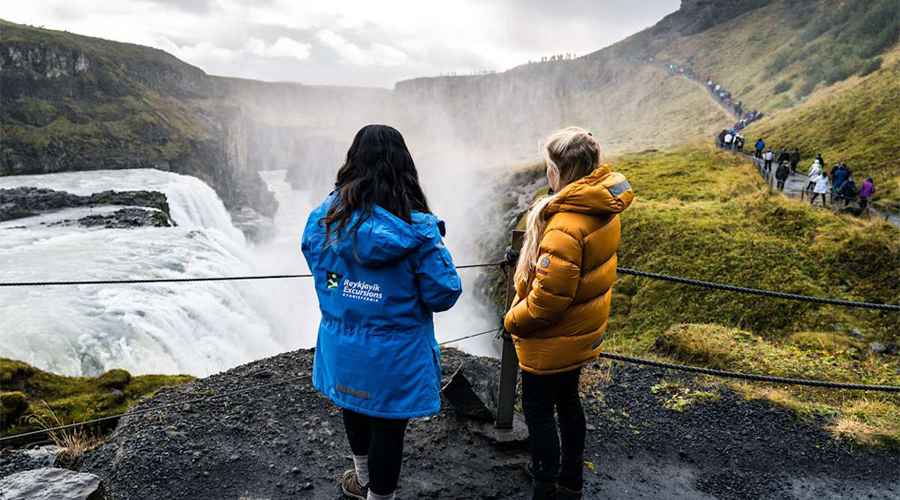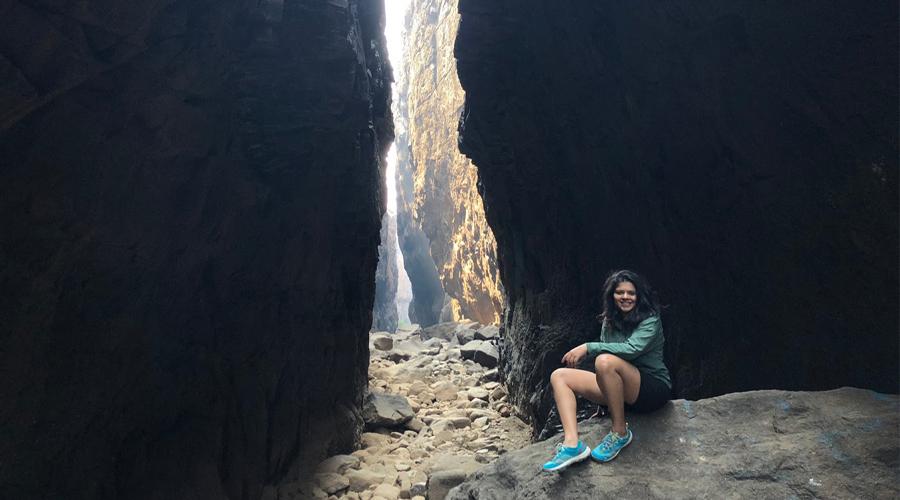Known as the “Golden Falls,” Gullfoss is one of Iceland’s most breathtaking natural wonders and a key attraction along the Golden Circle tourist route. Situated on the Hvítá River in southwest Iceland, the waterfall is renowned for its raw beauty, dramatic cascades, and the sense of power it exudes. Gullfoss is more than just a spectacular landscape; it is deeply ingrained in Iceland’s cultural and natural heritage, drawing visitors from across the world year-round.
Location and Natural Setting
Gullfoss lies in the canyon of the Hvítá River, which originates at Langjökull, Iceland’s second-largest glacier. The river’s glacial waters surge southward before plunging into a rugged canyon carved over thousands of years. The waterfall is a two-tier cascade: the first drop of around 11 meters is followed by a second, even steeper fall of about 21 meters, plunging into a narrow canyon approximately 70 meters deep. This two-stage descent, coupled with the thunderous roar of the water, creates a mesmerizing spectacle.
Surrounded by volcanic rock formations, moss-covered cliffs, and open highland landscapes, Gullfoss presents an iconic Icelandic scene. On sunny days, the mist from the waterfall often creates vibrant rainbows, enhancing its appeal and adding a touch of magic to the scenery.
Historical Significance
Gullfoss is not only a geological wonder but also carries a compelling story tied to Iceland’s environmental history. In the early 20th century, plans were put forward to harness the waterfall’s immense energy for hydroelectric power. However, these plans met strong resistance from Sigríður Tómasdóttir, the daughter of a local farmer who owned the land around Gullfoss. She became one of Iceland’s earliest environmental activists, determined to protect the falls from industrial exploitation.
Sigríður’s passionate campaign, which included threats to walk barefoot to Reykjavik in protest, drew public attention and highlighted the importance of conserving natural landmarks. Thanks to her efforts, Gullfoss was eventually preserved, and in 1979 it was declared a nature reserve. Today, Sigríður is remembered as a symbol of Iceland’s commitment to environmental conservation, and her story is etched into the cultural identity of the waterfall.
Geological Formation
Like much of Iceland, Gullfoss owes its existence to tectonic and volcanic activity. The Hvítá River flows through a rift valley formed by the separation of tectonic plates, which continuously shape the Icelandic landscape. Lava flows and glacial floods over millennia further deepened the canyon into which Gullfoss plunges today.
The powerful erosion caused by glacial water, carrying vast amounts of sediment and grit, carved the narrow gorge with sheer walls. This formation showcases the relentless natural forces at play in Iceland — water, ice, and fire — that together sculpt one of the most extraordinary landscapes on Earth.
Visiting Gullfoss
Gullfoss is easily accessible and lies about 105 kilometers east of Reykjavik, making it a popular day trip destination. As part of the Golden Circle route — which also includes Þingvellir National Park and the geothermal marvels of Geysir — it is one of the most visited attractions in the country.
The area around the falls is well-equipped for visitors, with marked footpaths, viewing platforms, and a visitor center that shares insights into the history, geology, and environmental significance of the site. The upper and lower paths provide different perspectives: the higher path offers panoramic views of the falls and canyon, while the lower trail allows visitors to get closer and feel the mist on their faces.
During summer, when the flow is at its peak due to glacial melt, Gullfoss is particularly impressive. However, winter also brings its own charm, with snowy landscapes and icicles framing the falls, creating a stark yet magical view. Although some trails may be slippery, the sight of partially frozen cascades under the northern lights is unforgettable.
Wildlife and Surroundings
The Hvítá River valley around Gullfoss is home to a variety of birds, including species of Arctic terns, redwings, and golden plovers. The expansive grasslands and highlands are also dotted with hardy Icelandic vegetation adapted to the harsh climate. Sheep and Icelandic horses are often spotted grazing in nearby fields, adding to the cultural landscape. The area also serves as a gateway to Iceland’s interior highlands, with routes leading toward Langjökull glacier, where adventurous travelers can explore snowmobiles, ice caves, or guided glacier hikes.
Cultural Importance
Beyond its natural beauty, Gullfoss holds a symbolic place in Icelandic culture. It embodies both the destructive and life-giving power of nature, reflective of Iceland’s strong ties to its rugged environment. The waterfall also stands as a reminder of the importance of preserving natural treasures against industrialization. For Icelanders, it symbolizes resilience, respect for nature, and the intertwined relationship between people and the land.
Several artists, photographers, and filmmakers have immortalized Gullfoss in their work, making it one of the most photographed waterfalls in the world. Its awe-inspiring presence has also contributed to Iceland’s rising popularity as a global travel destination.
Travel Tips
- Best time to visit: Summer (June to August) offers easier access, vibrant greenery, and strong water flow. Winter (November to March) offers snowy scenery and the potential spectacle of northern lights.
- Access: Gullfoss is on Route 35, about two hours by car from Reykjavik. Tours are widely available, including Golden Circle day trips.
- What to bring: Waterproof clothing is advisable, as the mist can drench visitors. Sturdy footwear is necessary, especially in winter when paths are icy.
- Nearby attractions: Combine a visit with Geysir geothermal area, Þingvellir National Park, and, if time permits, a snowmobile tour on Langjökull.
Conclusion
Gullfoss waterfall is more than just a stunning natural wonder; it is a symbol of Iceland’s proud heritage of conservation, resilience, and the enduring beauty of wild landscapes. Its thunderous cascades, framed by volcanic cliffs and glacial waters, remind visitors of the untamed forces that shape the planet. Whether viewed under the golden glow of the midnight sun or in the icy grip of winter, Gullfoss offers an unforgettable experience, standing as one of the most iconic landmarks in Iceland.


